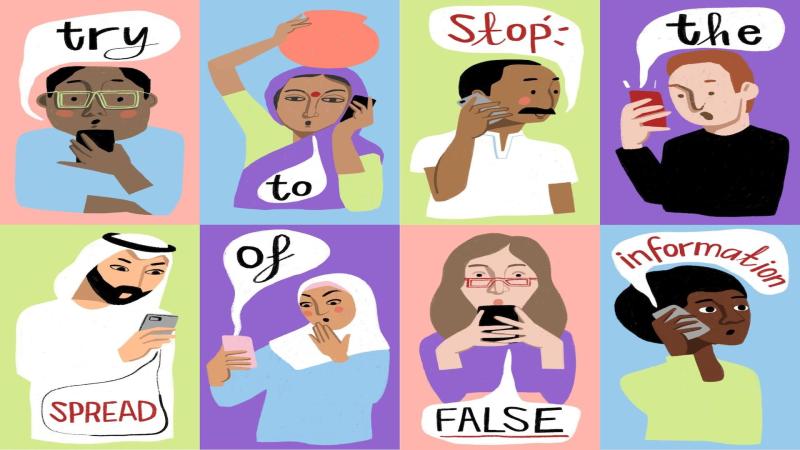
Since the advent of COVID-19 pandemic, there has been no dearth of misinformation and conspiracy theories related to the virus circulating on social media. From home remedies to false news on active cases and deaths, these online rumours and misinformation have created chaos and violence worldwide. Combating fake news, which existed before the pandemic too, is a significant issue as the human cost they bear is high. Multiple studies have suggested that one of the crucial reasons people fall victim to online hoaxes is the lack of digital media literacy—the ability to evaluate information on various digital platforms.
A recent study published in the Proceedings of the National Academy of Sciences (PNAS), has shown that imparting digital literacy can help people identify online fake news. The study, involving researchers from the United States of America, the United Kingdom and India, conducted surveys in the United States and India, where online fake news has become rampant in past years.
"We were interested in applying the insights of digital literacy's role to the important case of fake news on social media and real-world attempts being developed to counteract it," says Dr Andy Guess, as the motivation of the study. He is an assistant professor of Politics and Public Affairs at Princeton University and the corresponding author of the study.
Facebook and WhatsApp, which are known to be fertile digital grounds for viral misinformation spread, have taken some steps to educate their users on identifying false information. Facebook's "Tips to Spot False News" is a widely disseminated digital literacy intervention and consists of ten strategies that readers can use to identify misleading stories. These tips are straightforward for readers to apply, favouring quick decision-making. For instance, one tip recommends readers to be sceptical of headlines, warning that "if shocking claims in the headline sound unbelievable, they probably are."
The researchers provided Facebook’s tips to a group of around 4000 readers from both India and the United States. They were then presented with a series of news contents, from which they had to identify the false ones. The researchers surveyed these users in two stages to check how long the effects of the intervention lasted. The first survey was conducted soon after the readers were provided with the tips, while the second one came after several weeks.
The survey results show that the intervention reduced people's trust in both false as well as mainstream news, but the effect on the former was significantly high. It boosted the readers' ability to differentiate between the two. In the United States, among a general sample, this ability increased by 26.5%, and among an educated online sample in India, by 17.5%. However, the face-to-face survey from rural India did not show any observable difference. The researchers believe that it could be because people in villages have limited previous experience with the internet.
The second survey results showed that in the United States, the effect of the digital literacy intervention lasted for a longer time. On the contrary, in India, the impact of the intervention decayed with time, suggesting the need for continuous efforts.
When asked about the reason for this difference between the two countries, Dr Neelanjan Sircar, an Assistant Professor of Political Sciences at Ashoka University, who led the survey experiments in India, replies -
"Fake news will always exist, and has always existed in some form. What has changed is the mode of communication and the speed at which fake news can proliferate through society. So when we talk about impact, it is best to think about how to generate conditions under which fake news will have limited impact on political, economic, and social outcomes."
The researchers also points out that such digital literacy interventions can be generally approached in two ways. One is by generating open data tools and resources for individuals to find the truth themselves. The second approach is to develop broadly reputable and credible news sources.
Though the study offered some insights into how we could combat fake news, it has a few limitations. Firstly, it does not wholly eliminate the readers' belief in false stories. Besides, people's trust in mainstream news also declined as a result. It was also unclear if all the respondents read and understood the shared tips correctly. Nevertheless, these findings are a compelling demonstration that a simple, cost-effective digital literacy intervention can help people in identifying online fake news to some extent.
“The explosion of rumours and misinformation around COVID-19 can be referred to as an ‘infodemic’. Digital literacy initiatives like the one we studied can help people make sense of the chaotic information environment, and such competencies are especially necessary in times like these," signs off Dr Guess.
This article has been run past the researchers, whose work is covered, to ensure accuracy.






